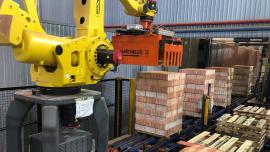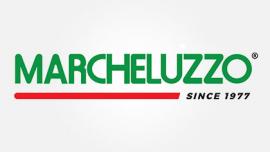Advances in brick firing technology

Marcheluzzo S.p.A. (Caldogno – Italy)
Thanks to several decades of experience in the sector, Marcheluzzo S.p.A. has been able to provide valid responses to the market in terms of firing processes by customising and adapting projects according to production requirements, product types and energy savings.
Firing is a crucial stage of the brick production process during which the products assume their final and irreversible state.
Kiln technology has evolved considerably over the years, both technically and in terms of environmental sustainability.
Enormous progress has been made since 1858 when Friedrich Eduard Hoffmann designed and patented the first circular tunnel kiln (later models used an elliptical design) in which a calculated subdivision of volumes made it possible to perform firing continuously while simultaneously unloading and reloading the kiln.
Advances in technology have transformed that original tunnel kiln into more efficient controlled-atmosphere machines capable of firing products that come up to today’s standards.
Tunnel kilns from Marcheluzzo S.p.A.
Thanks to the expertise of engineers and designers with proven experience in the sector, Marcheluzzo has been able to provide valid responses to the market in terms of firing processes by customising and adapting projects according to production requirements and product types.
The proposed tunnel kilns are built from suitably assembled materials that allow for high levels of performance in terms of firing temperatures, energy consumption and thermal insulation coefficients.
The products pass through the firing tunnels at varying speeds while the countercurrent flow performs preheating. High-efficiency burners maintain the correct sintering temperatures and a dedicated cooling zone allows the material to be cooled to a suitable temperature before being conveyed to the subsequent packaging stage.
Marcheluzzo kilns adopt a traditional construction based on refractory materials with different alumina percentages to withstand potential acid attacks. During the initial firing stage, modern high-pressure recycling systems are used for effective and uniform material preparation. Advanced systems consisting of high-speed burners and ceiling-mounted forced air units allow the material to be fired for an appropriate length of time.
The cooling zones are suitably sized to ensure the correct temperature decreases per hour in order to avoid subjecting the material to thermal shock and to maximise the use of recovered air in the dryers. Marcheluzzo has improved the energy efficiency of the kilns by reducing daily gas consumption and designing a specific dry-installed insulation package consisting of calcium silicate bricks and fibres of various densities. Plants can be built ranging from a minimum of 200-300 tons/day up to 1,400 tons/day.
The experience in Chechnya
One of the biggest orders received recently by Marcheluzzo was from the Grozny, Chechnya-based brick producer Groz Stroy Keram. This involved the installation of a complete system with a kiln with high resistance to acid attack due to the raw materials used in the area, a design that allows firing to be performed in a flashing atmosphere, and a combustion plant for firing facing bricks and large blocks with a daily volume of 500 tons.
The excellent results have demonstrated that a thorough assessment of the client's requirements coupled with Marcheluzzo's decades of experience provide the perfect guarantee of successful installations that deliver efficiency and energy savings.
Did you find this article useful?
Join the CWW community to receive the most important news from the global ceramic industry every two weeks
























